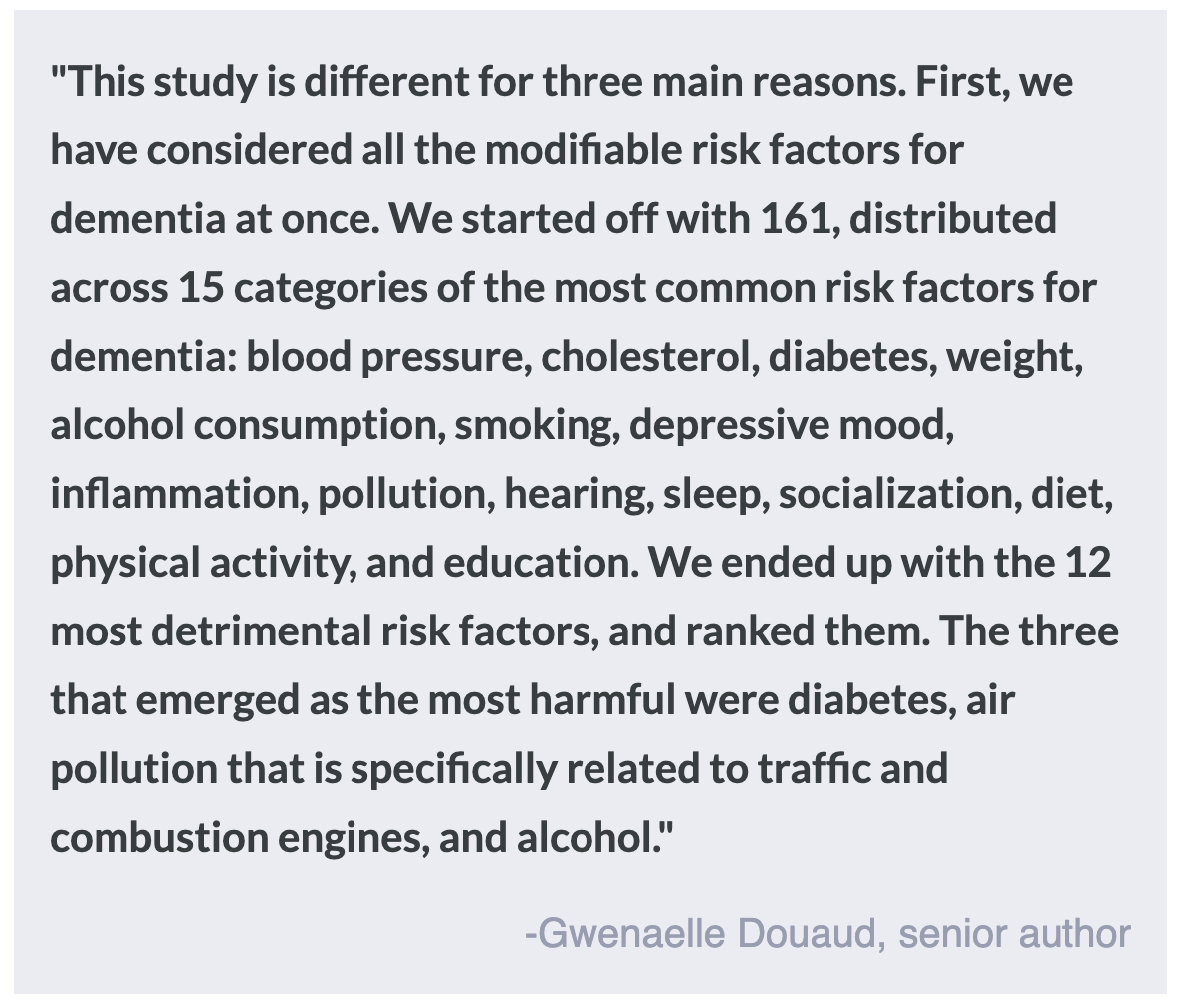Risk Factors Affecting Brain Regions Vulnerable to Aging and Disease
Post by Meagan Marks
The takeaway
The “LIFO” network is a collection of high-functioning brain regions most susceptible to decline by aging and disease. Particular genes and modifiable risk factors such as diabetes, pollution, and alcohol intake are shown to be linked to the vulnerability of these regions.
What's the science?
Regions of the brain associated with high-process functions such as memory, attention, and execution tend to degenerate earlier and faster than the rest of the brain. These regions are also the last to develop during adolescence, coining them the “last in, first out” (LIFO) network. It is known that these LIFO regions are especially vulnerable to diseases like Alzheimer’s, Parkinson’s, and Schizophrenia, however, the genetic and modifiable risk factors that influence the sensitivity of these regions remain unknown. This week in Nature Communications, Manuello and colleagues aimed to identify these factors via statistical analysis to understand further how the LIFO network is regulated and to determine potential behaviors that may shield or exacerbate its decline.
How did they do it?
To determine the specific genes and modifiable risk factors linked to the LIFO network, the authors ran a series of statistical tests using data from the UK Biobank, a large-scale biomedical database that holds genetic, lifestyle, and health information of thousands of participants. To begin, the authors first calculated the grey matter volume of the LIFO regions of nearly 40,000 participants using brain scans obtained from the biobank. This allowed the authors to determine how much degeneration had taken place (less volume = more degeneration). Next, using computational analysis, the authors were able to sift through the genomes of participants to identify which genes were significantly associated with the grey matter volume of the LIFO network and which variants, or versions, of these genes were significantly associated with a lower volume. Finally, the authors looked at the association between the LIFO network and 15 modifiable risk factor categories that were previously linked to dementia. The authors were able to use the health and lifestyle data of biobank participants to do so, statistically determining which of these factors were significantly associated with LIFO network grey matter volume.
What did they find?
After genomic analysis, the authors identified seven gene clusters, or groups of genes, that were linked to the LIFO network. The top gene variants in these clusters (3,934 total) were from genes that regulate immune cell trafficking, inflammation, and neurogenesis, genes that have been linked to blood pressure, sleep duration, and cognitive performance, and genes located in a genetic region associated with Alzheimer’s disease and other neurodegenerative disorders. In total, these results suggest that individuals with specific variants of the genes identified may have a LIFO network more vulnerable to disease and aging.
Regarding modifiable risk factors, the authors found that 12 of the 15 modifiable risk factor categories had at least one factor that significantly affected the LIFO brain network. Taken together, these 12 factors significantly explained 1.5% of the vulnerability of the network after age and sex were removed. Of these factors, the authors determined that diabetes, alcohol intake, and pollution by nitrogen dioxide were the most harmful to the LIFO regions. This suggests that individuals who have been diagnosed with diabetes, who consume copious amounts of alcohol, or who have high exposure to nitrogen dioxide pollution may be at a higher risk of cognitive degeneration in these brain regions.
What's the impact?
This study is the first to identify specific genetic and modifiable risk factors associated with the LIFO brain network, which contains the high-functioning regions most vulnerable to decline by aging and disease. Determining the specific gene variants and modifiable risk factors that are associated with LIFO regions may help to identify individuals at higher risk for cognitive decline. Recognizing these factors will allow patients and providers more time to protect against potential decline and help explain the biological mechanisms behind degeneration.


